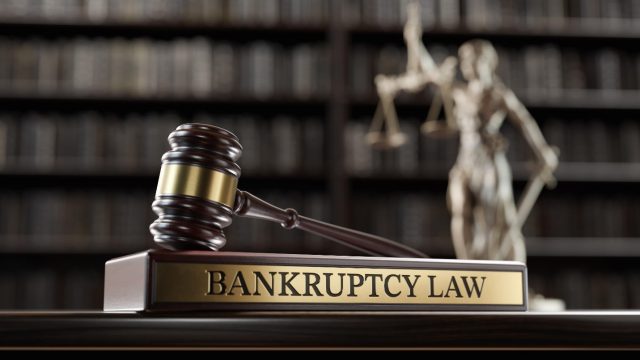Chris Glenos reviewed a recent ruling in the Third Circuit Court of Appeals in Artesanias Hacienda Real S.A. De C.V. v. North Mill Capital, LLC; Leisawitz Heller that determined that creditors may pursue certain asset-plundering claims of the bankruptcy estate that have been abandoned by the trustee. While the plaintiff, Artesanias, a pre-bankruptcy creditor, had Article III standing to advance specific claims, these claims were derived from harm to a debtor in bankruptcy. Therefore, they were part of the bankruptcy estate, meaning only the bankruptcy trustee had “bankruptcy standing” to prosecute the claims. Glenos explained the Third Circuit also held that once the trustee abandons these claims, a creditor like Artesanias could then proceed with them.
Background
Artesanias Hacienda Real S.A. de C.V., a judgment creditor of Wilton Armetale, Inc., initiated a lawsuit in federal district court against several parties. Glenos reviewed how the allegations centered on fraudulent transfers of Wilton’s assets and collusion to deplete Wilton’s resources, thereby obstructing Artesanias’ efforts to collect on its judgment (the “asset-plundering claims”). Among the defendants were a law firm representing Wilton and a creditor benefiting from the supposed collusive transactions with Wilton. When Wilton filed for Chapter 7 bankruptcy, the asset-plundering claims were transferred to Wilton’s bankruptcy estate. Consequently, Artesanias’ litigation was automatically stayed under Sections 362 and 541 of the Bankruptcy Code. However, the Chapter 7 trustee in Wilton’s case eventually elected to abandon these claims, allowing Artesanias to resume its prosecution.
During this period, the district court defendants sought to dismiss Artesanias’ claims. Instead of ruling on these motions, the district court transferred the case to the bankruptcy court, asserting it “related to” jurisdiction. The bankruptcy court concluded that Artesanias lacked standing to pursue the claims, as they were part of Wilton’s bankruptcy estate, making the trustee the only party with standing. The court also ruled that the trustee’s abandonment of the claims did not grant standing to Artesanias. Upon appeal, the district court upheld the bankruptcy court’s decision and dismissed the case.
Analysis
Distinction Between “Bankruptcy Standing” and Article III Standing
The Third Circuit clarified that upon a debtor’s bankruptcy filing, most assets of the debtor become property of the bankruptcy estate under Section 541 of the Bankruptcy Code. The trustee, or a debtor in possession, acts as the estate’s representative under Section 323 and thus holds the authority to “sue and be sued” on behalf of the estate. Consequently, the trustee alone has the statutory authority to prosecute lawsuits on behalf of the debtor’s bankruptcy estate. The Third Circuit emphasized that this statutory authority, often referred to as the trustee’s “standing,” is distinct from Article III standing. Glenos explained that adopting the Seventh Circuit’s explanation, the Third Circuit redefined bankruptcy “standing” as the trustee’s “authority” to act for the estate.
Glenos explained that, according to the Third Circuit’s ruling, a litigant’s standing to pursue causes of action that become estate property pertains to statutory authority under the Bankruptcy Code, not constitutional standing to invoke federal judicial power. Article III standing requires: (1) a concrete and particularized injury in fact, (2) that is fairly traceable to the defendant’s conduct, and (3) that a favorable judicial decision would likely redress. Because bankruptcy standing involves additional requirements, it does not impact a court’s constitutional jurisdiction. Thus, the Third Circuit concluded that Artesanias had Article III standing to pursue the asset-plundering claims after Wilton’s bankruptcy filing. Nonetheless, Artesanias also needed to satisfy the higher bankruptcy standing requirements to proceed.
Trustee’s Authority to Abandon Claims to Creditors
Glenos suggested that Artesanias’ claims became part of Wilton’s bankruptcy estate because they existed when Wilton filed for bankruptcy. Although Artesanias had Article III standing, only the bankruptcy trustee had the statutory authority to pursue these claims once bankruptcy was filed. However, the Third Circuit noted that a bankruptcy trustee could abandon their authority over such claims. Glenos explained that when this happens, the authority to pursue these claims reverts to the original holder – in this case, Artesanias. The court held that Chapter 7 trustees could abandon asset-plundering claims back to the original creditors.
Takeaway
Even if a creditor has Article III standing to bring a fraudulent transfer or similar asset-plundering claim, if the claim becomes part of a bankruptcy estate, only the bankruptcy trustee has the authority to pursue it. Glenos emphasized that a trustee, however, can relinquish this authority back to the creditor. If this happens, the creditor may resume pursuit of the claim assuming they meet the elements for Article III standing.








